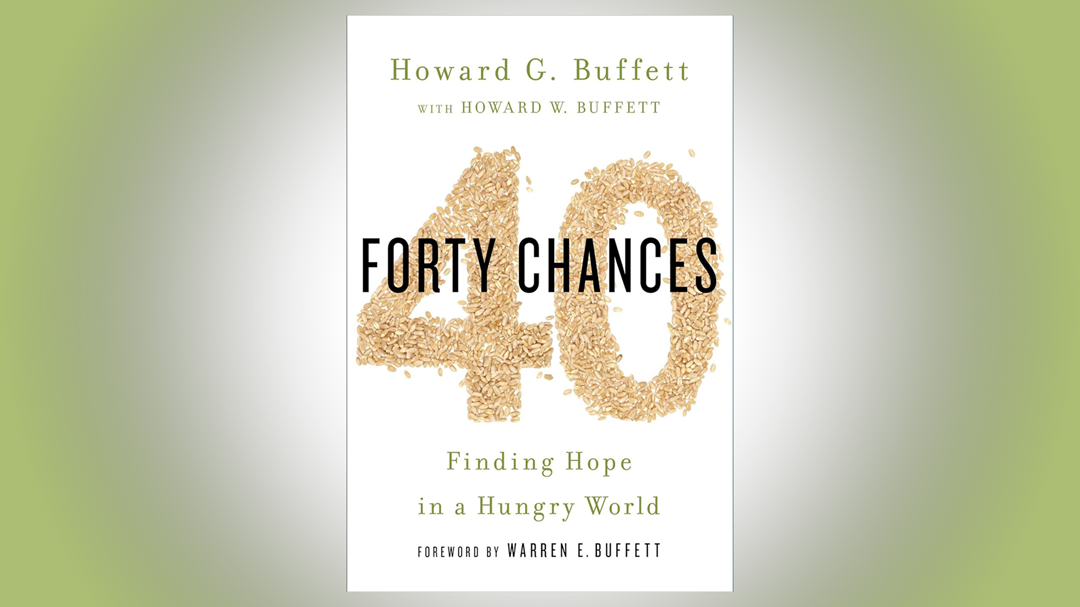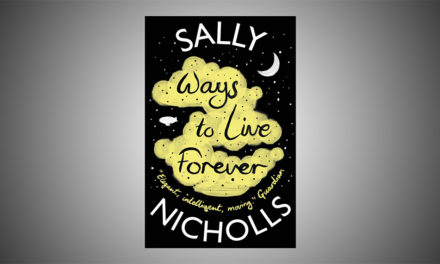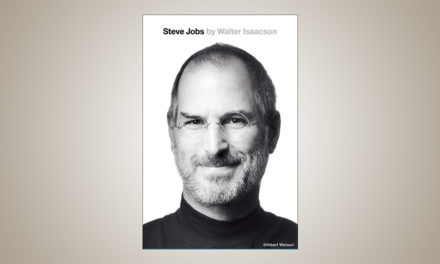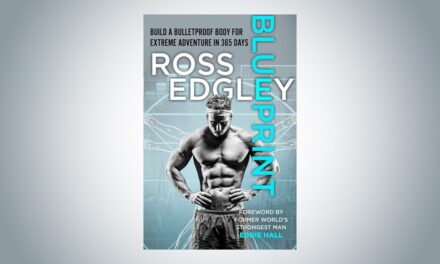The premise of 40 Chances by Howard G. Buffet is based on a two-fold foundation. First is the challenge posed by Warren Buffet, his father, who asked him, “If you had the resources to accomplish something great in the world, what would you do?” when he announced to leave most of his fortune to philanthropy.
And second, is a compelling perspective put forth by a speaker at a farmers’ conference that Howard Buffet attended, who said, “that if you are healthy and like most farmers, you are only going to farm your land 40 times in your lifetime.”
This means you will only get 40 chances to get farming right and accomplish the best yield while responding to what nature throws at you.
This hit Howard Buffet hard that 40 chances or 40 years don’t seem that big of a time to solve some of the biggest issues in the world when you put it that way.
Following his question Warren Buffet gave Howard Buffet a grant of $3B to work on a cause of his choice.
Howard Buffet decided to use his grant of $3B to help the most vulnerable 1 billion individuals on earth who suffer from food insecurity.
So, he challenged himself to put $3B to work in 40 years to help solve global food insecurity.
In 40 Chances: Finding Hope in a Hungry World we join him on his journey around the world through 40 stories of lessons learned, failure, success, and hope from rural America to some of the most dangerous places on earth.
The lessons he shares with us are truly valuable and should be the guiding compass of sustainable change in the world.
The 40 chances philosophy is also applicable in our personal lives as individuals who will only get 40 chances to live their best lives and do their best work.
How Unthoughtful Humanitarian Aid Causes More Problems Than It Solves
In the book we learn about how misdirected aid can exacerbate existing issues rather than relieve them and how it can also destroy local value chains that eventually makes long-term sustainable change noticeably difficult and far-fetched to achieve.
I abstained from using the word impossible because Howard Buffet clearly points out the things that people and organizations can do to turn the situation around in a matter of years in the world’s most difficult places and scenarios.
Throughout the book, you will find many examples. Where say, food aid provided in an extremely critical situation was sold by the distributing NGOs and NPOs in the international market to raise funds to solve some other issues in disaster-stricken regions.
In some desperate situations, NGOs and NPOs have been observed to even compete for resources with other NGOs and NPOs.
Owing to that the food that was meant to help the most insecure of individuals landed in posh cafes and restaurants around the world on the plates of wealthy individuals.
This is not done with ill intentions but with ill planning. When natural disasters strike everyone merely sending food is not going to help people who also require medical attention and funds for reestablishing their settlements.
Additionally, when the free food actually floods a food-insecure region it competes with the produce of the local rare farmers, deflating their prices, and leaving them with no funds for continuing farming.
In many instances, it has also been observed that farmers left farming and joined the other food aid-dependent populous for survival.
Crippling the chances of any positive developments eventually.
Many such issues and aid work around the world are discussed in this book and it provides an in-depth context to help us visualize the challenges sustainable change is facing around the world.
The 6 Pillars of Sustainable Change and Development
The pillars I am going to discuss are not evidently listed in the book but are discussed at breadth concerning various problems aid work faces globally.
While they are directly addressed within the book and are explained at length, they are not listed like I am about to below.
The best part of 40 Chances are these points that will guide anyone interested in supporting sustainable development and change in any part of the world.
So below are 6 pillars that can support positive change in the direst of humanitarian and ecological situations around the world –
- Collaboration with the local population.
- Collaboration with local governments.
- Collaboration with other NPOs working within the same space.
- Bidding for policy-level changes.
- Development of indigenous solutions.
- Development of local value chains.
NPOs working in isolation and not collaborating on intertwined issues are also inefficient in solving these big challenges.
Without consistent government and policy backing aid initiatives are rendered useless over time.
Without understanding the relationship between a region and its people and diverse interconnected issues aid work can be misdirected and worsen existing problems.
Without developing local functional ecosystems any global issue will always depend on aid to keep from drowning and applying blanket solutions for global problems will also not help.
While this might seem like I have summarized the most essential part of the book for you but believe me reading through the stories in it will give you a broader context about each of the pillars listed and fill you with hope about the positive change that is possible in the world.
If you are a reader from the US you can purchase this book from Amazon by clicking here.
(This is an Amazon affiliate link which earns us a small commission without any extra cost to you and helps us run this website.)
Conclusion
Howard Buffet makes a statement in the book that loosely means that not all rich in the world are out to do bad, most have families and want to see and support the good in the world.
I personally found this uplifting to read in light of all the conspiracies that surround the global 1%.
Second, he also says that the job of an NPO is to eventually become unrequired in its area of work because it has helped establish a self-sufficient system and does not need the NPO’s intervention indefinitely.
The book lasts its welcome a little longer than manageable but it succeeds in holding your attention firmly for two-thirds of its length.
The rest of it depends on your personal curiosity and your susceptibility to the sunk-cost-fallacy cognitive bias.
For me, I had to finish the book.
It’s an enriching experience to read, it takes you on a journey of global aid work and tells the stories of some great humans who are living for a cause bigger than themselves. It’s inspiring to read and makes you hopeful about the future some people are striving to create.
I was amazed to read that work on climate change and global warming is ongoing from as far as the 80’s.
But I was also terrified to learn that some of the man-made ecological disasters have been taking place for as long and even longer. Like the destruction of the Amazon rainforest.
While from the title it may seem like a personal motivation book this book actually is a thoughtful guidebook for people who want to contribute to positive change in the world. Made up of the experiences of a man who has spent multiple decades learning from his failures and successes doing just that.
However, the personal motivation part is covered in its foundation itself.
All of us got 40 chances to do our best work and live our best lives.








